In the clash between Manchester United and Tottenham, the tactical maneuvers on the field took center stage, offering fans a strategic spectacle. This article delves into a simplified tactical analysis of the match, exploring the key principles, formations, and player strategies that unfolded during this exciting encounter. Let’s unravel the game’s tactical dynamics, shedding light on the strategic decisions that influenced the outcome of Manchester United vs Tottenham.
Manchester United
Build-up
In the build-up, Manchester United set up in their usual 1-4-2-3-1 formation, occasionally rotating into a 1-3-4-3:
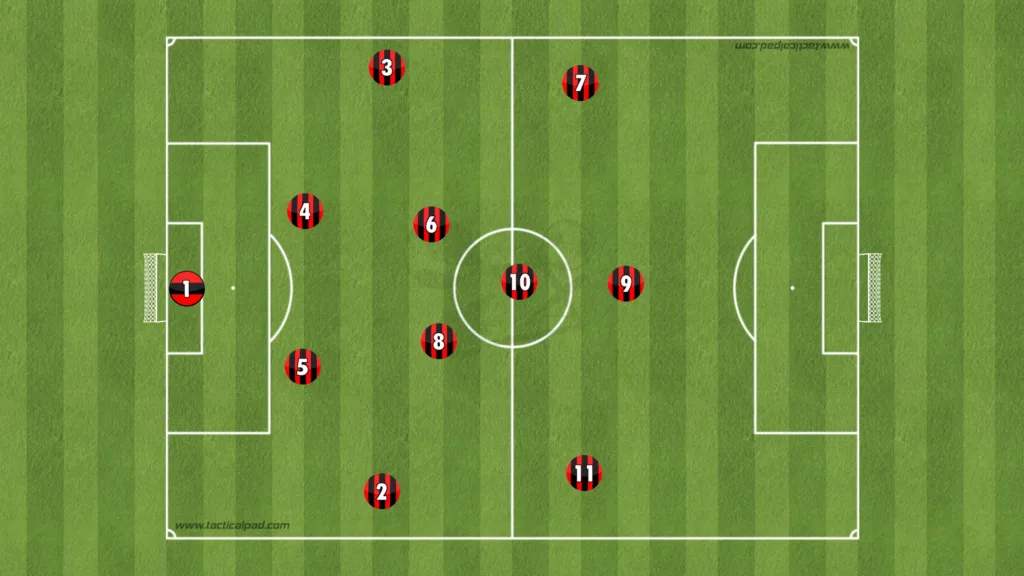
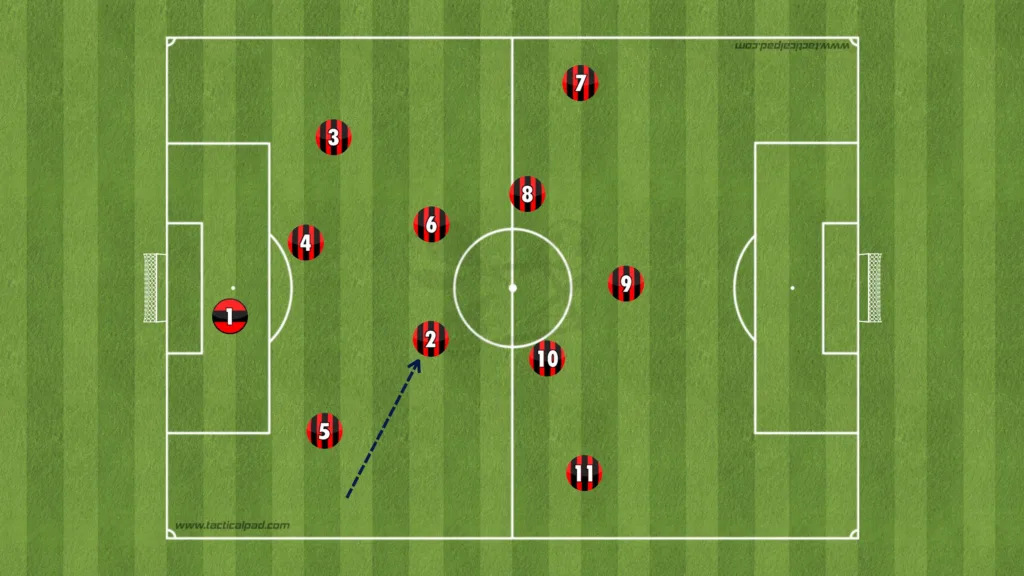
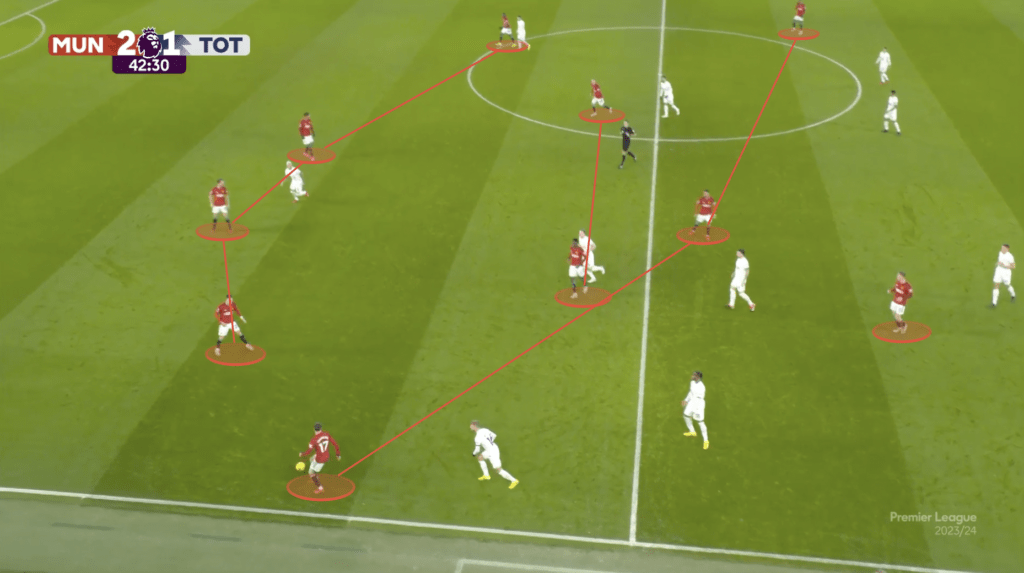
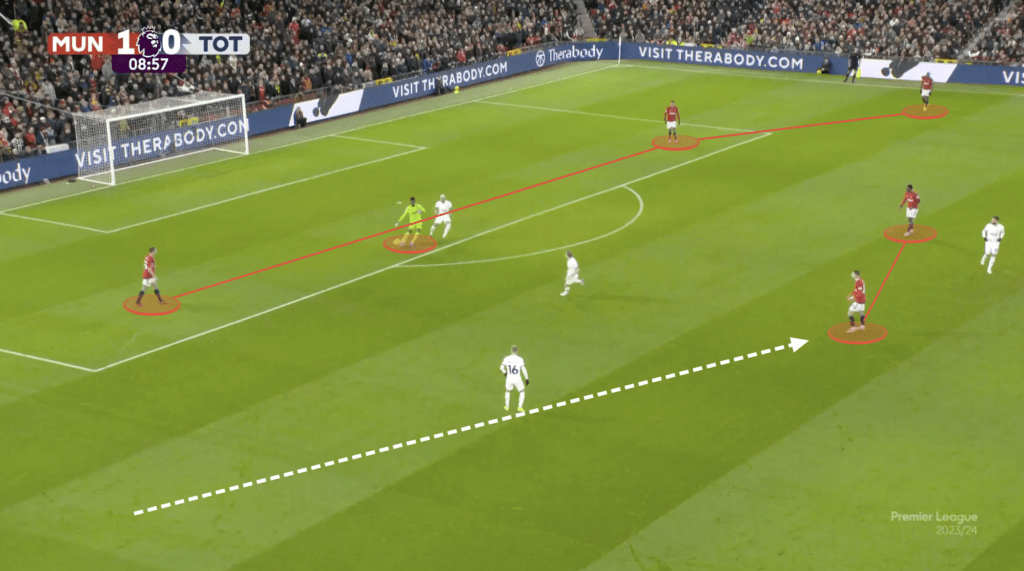
They most frequently inverted with Dalot from the right-back position, playing with Mainoo as the two holding midfielders. One part of Man United’s game, however, is that they are extremely fluid. Everyone can play everywhere, even though the formation does not change.
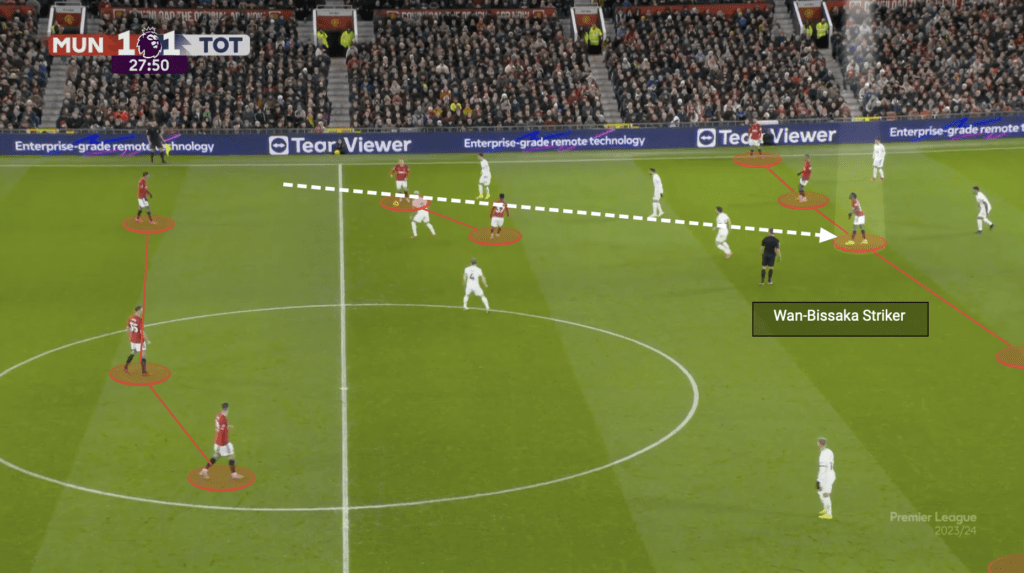
Man United uses Onana a lot in the build-up phase, often baiting the press and then using Onana’s good long balls to find free players high up the pitch.
In the final third, Man United liked to use the overlap to create chances. The wingers would often receive the ball out wide, attack the Tottenham fullback, and create a 2v1 with the United fullback.
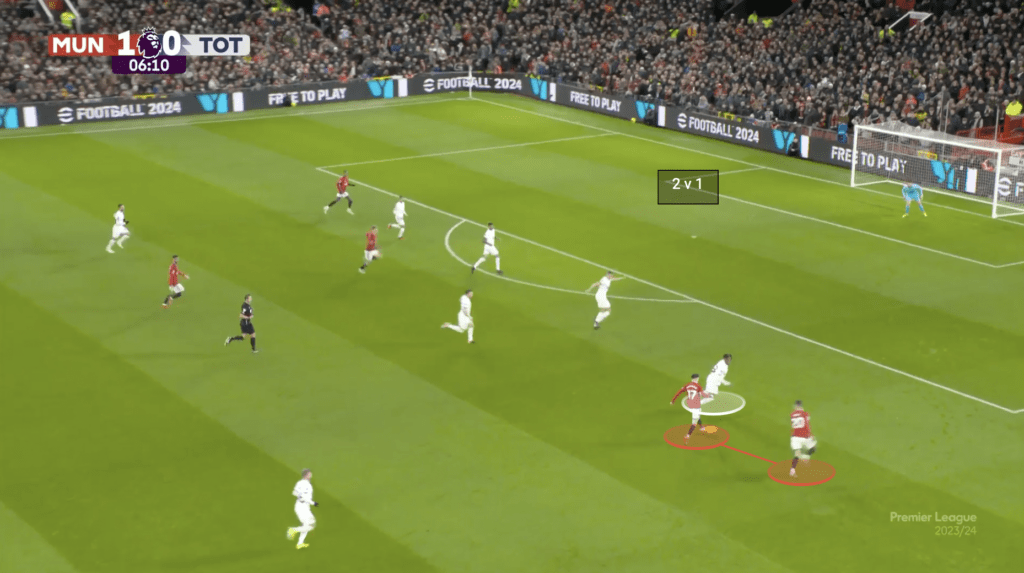
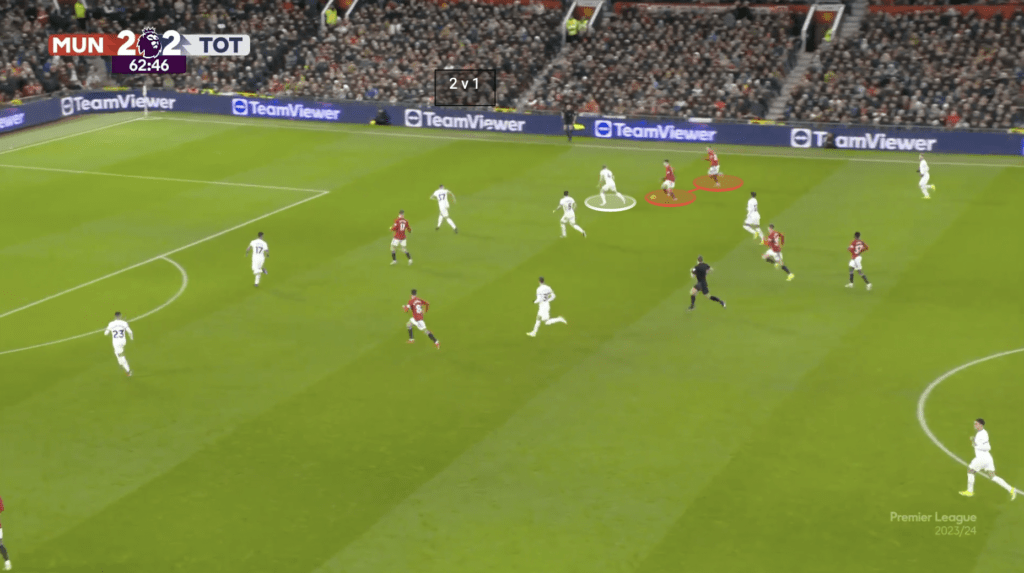
Defending
In the low press, Manchester United defended in a 1-4-4-2 formation. They would sometimes defend in a low block, staying compact and closing the center.
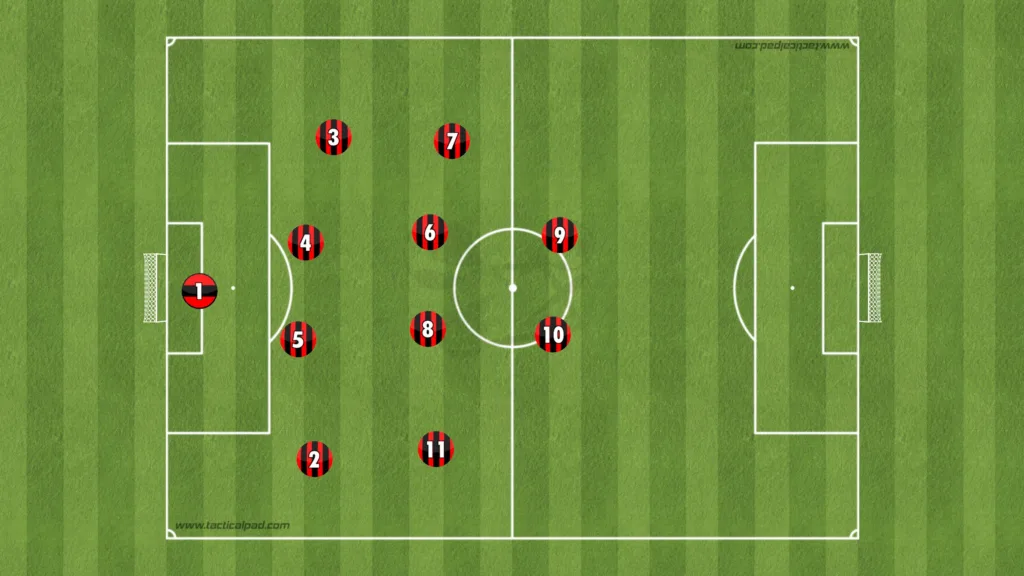
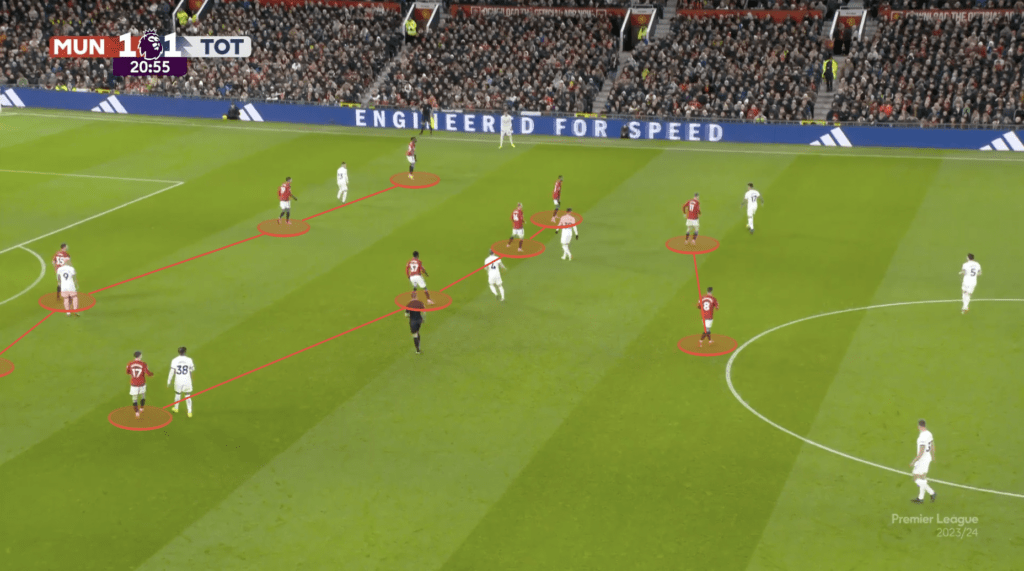
However, Ten Hag’s team would predominantly use the same shape further up the pitch in a mid-block.
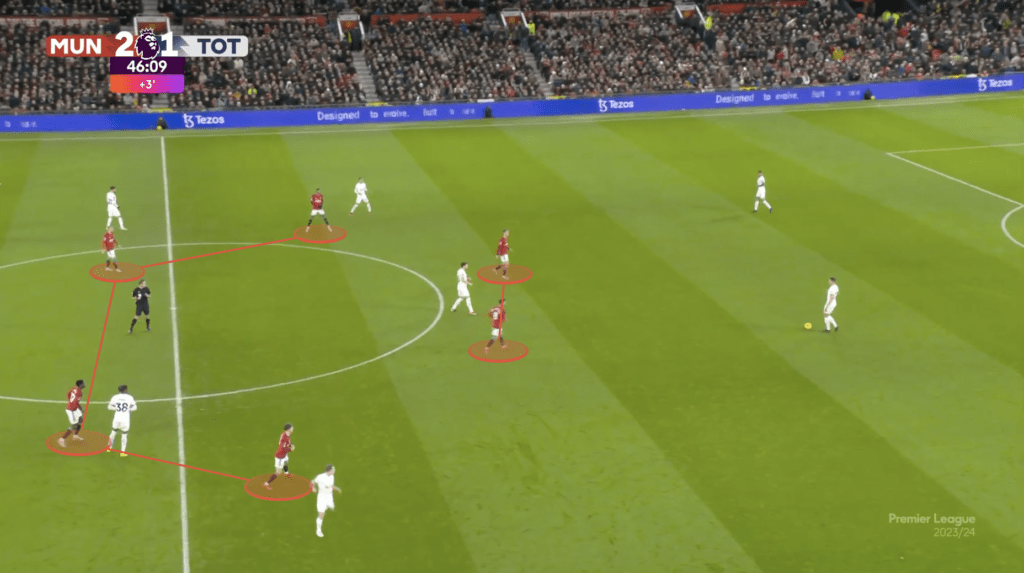
In the mid-block, they put pressure on Tottenham’s center-backs using the strikers. The striker closest to the center-back on the ball would press, while the other would cover Tottenham’s number six. When the ball was played to the other center-back, they would switch, meaning that the striker who covered the six would press the center-back, and the other striker would take his place and block the six.
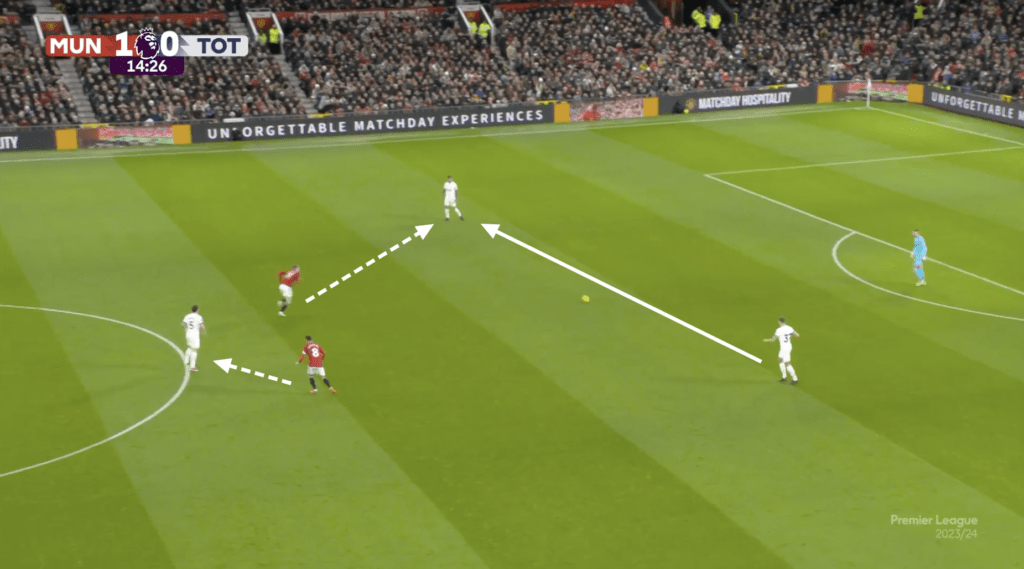
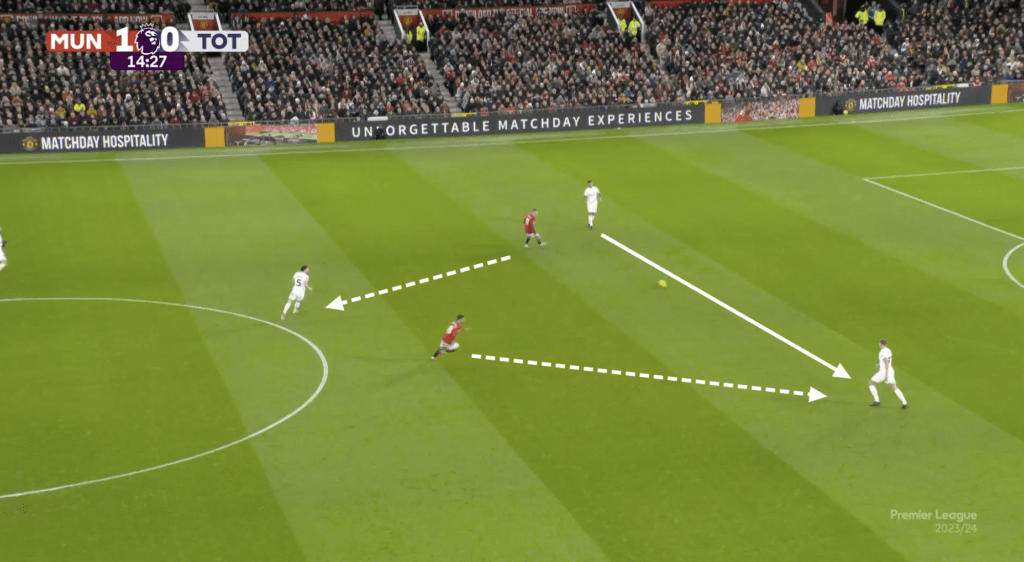
Manchester United would rarely press Tottenham high up the pitch and, most of the time fell back into their mid-block.
Transitions
Manchester United are, because of their pace up front, often great in offensive transitions. In this game, the counterattacks became United’s best asset because of the attacking nature of Tottenham. Tottenham’s inverting fullbacks left massive spaces wide open for United to exploit. The first goal comes from a fast through ball to Rashford in the open space behind an attacking Pedro Porro.
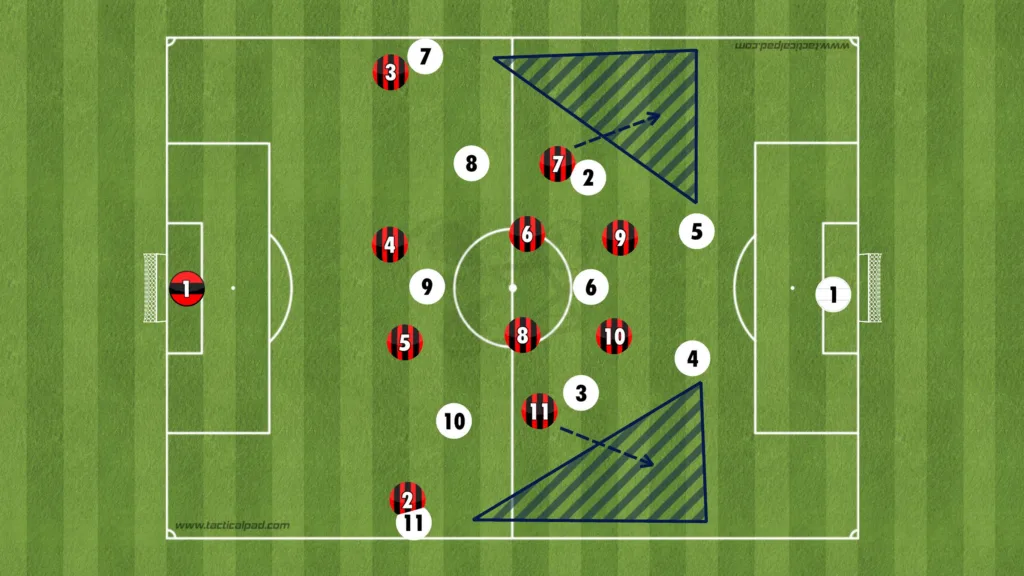
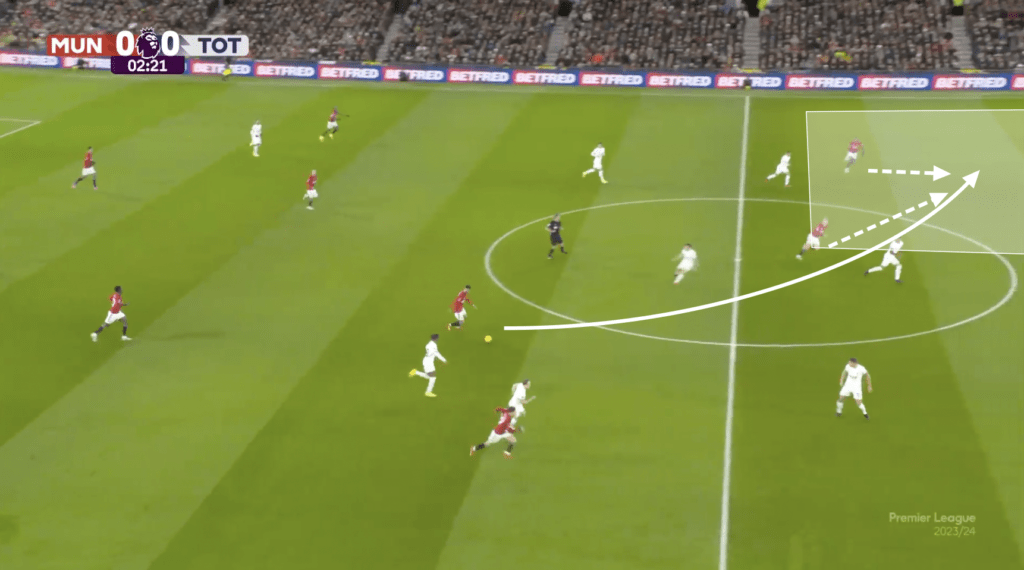
Tottenham
Build-up
In the low build-up, Tottenham used their usual 3-3-5 formation, with the goalkeeper acting as a center-back and the fullbacks coming into the midfield. This created a numerical advantage in the build-up phase, often allowing Tottenham to play through Manchester United’s first line of pressure.
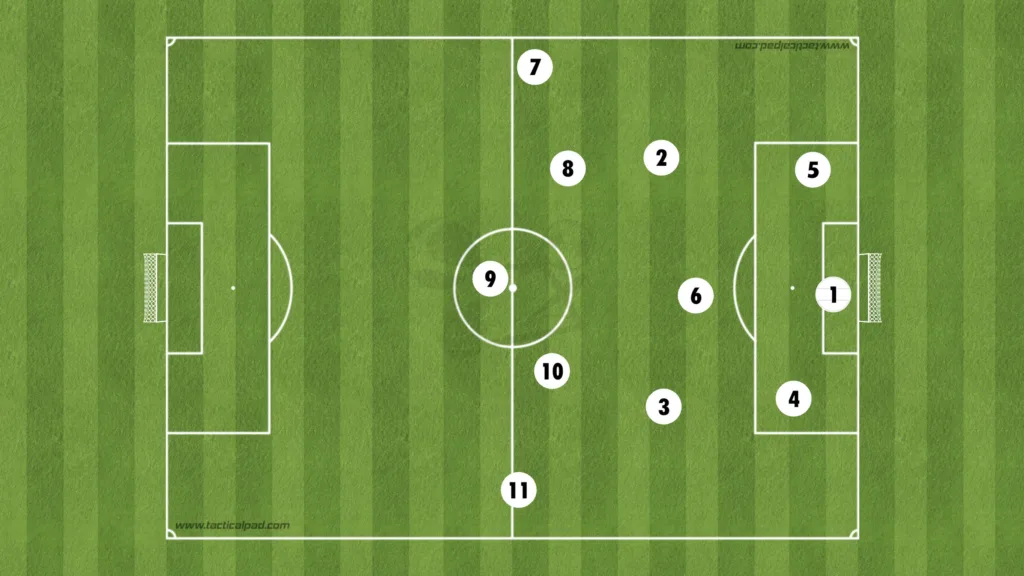
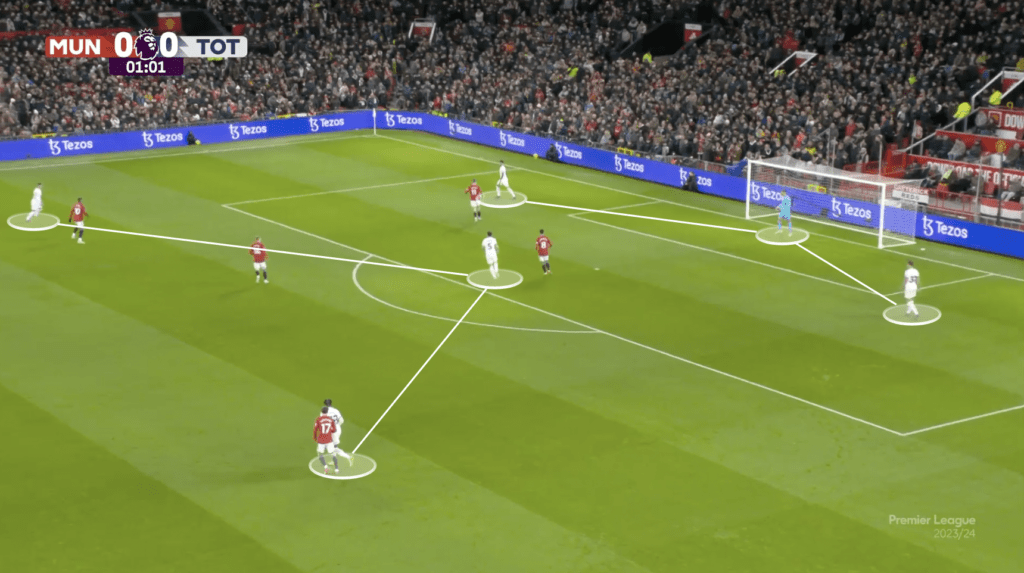
Tottenham would beat the first line of press using tools such as the third-man concept and following pressure.
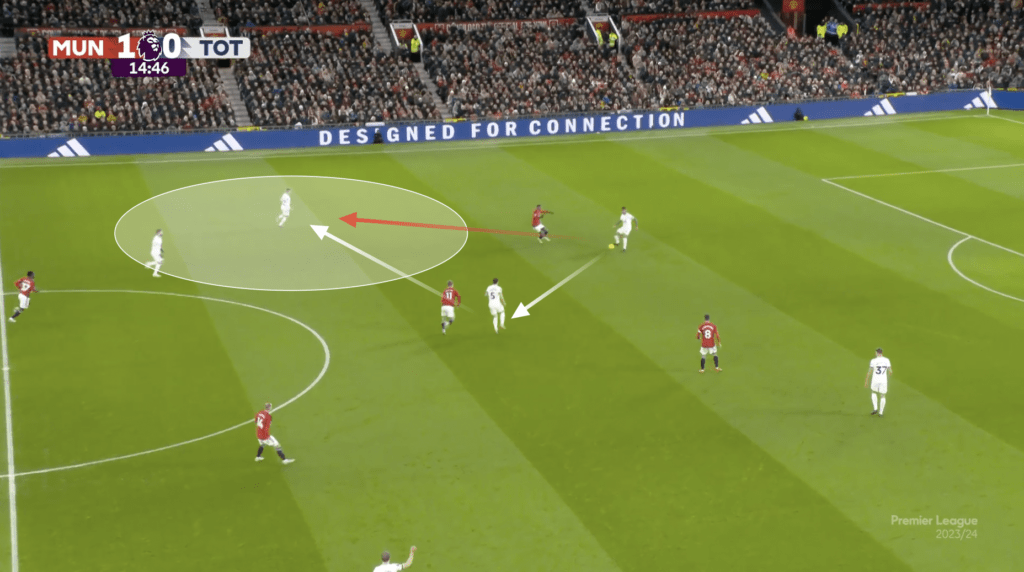
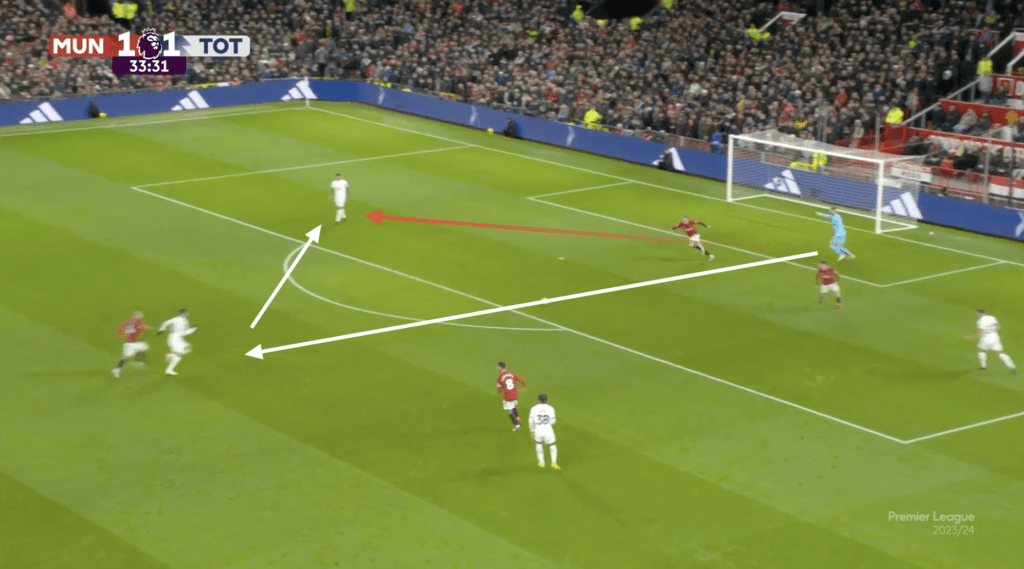
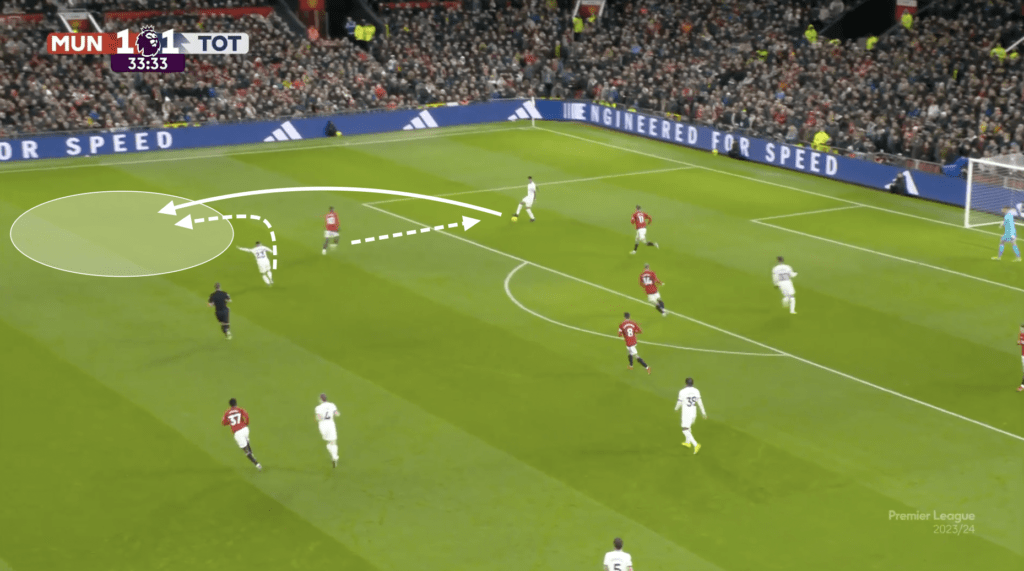
They also often found the space outside Manchester United’s wide midfielder. Rashford would be pinned by Tottenham’s inverting fullback, opening the space for the number eight to drop. Tottenham would beat the line with a pass from the center-back, allowing them to progress the ball higher up the pitch.
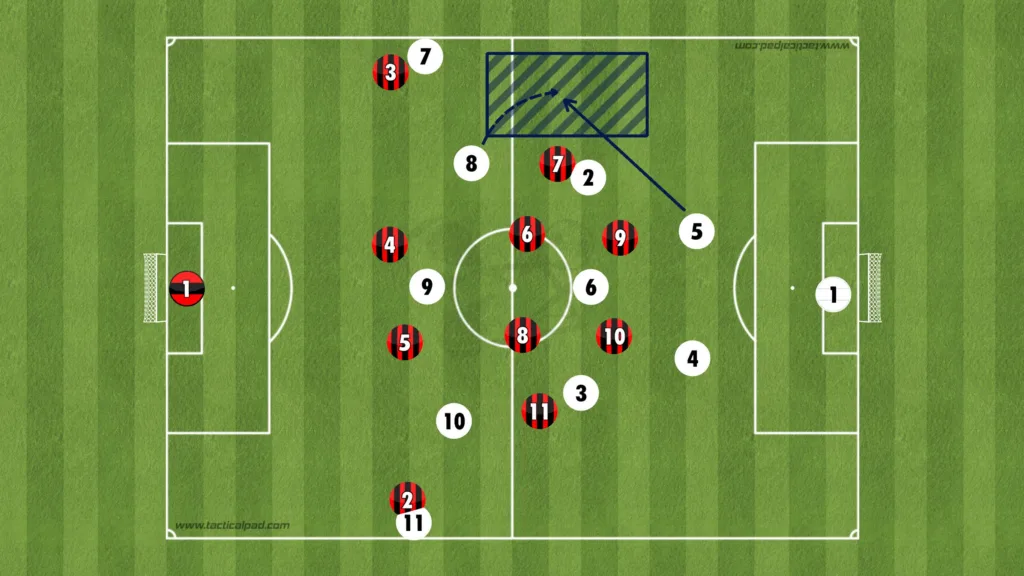
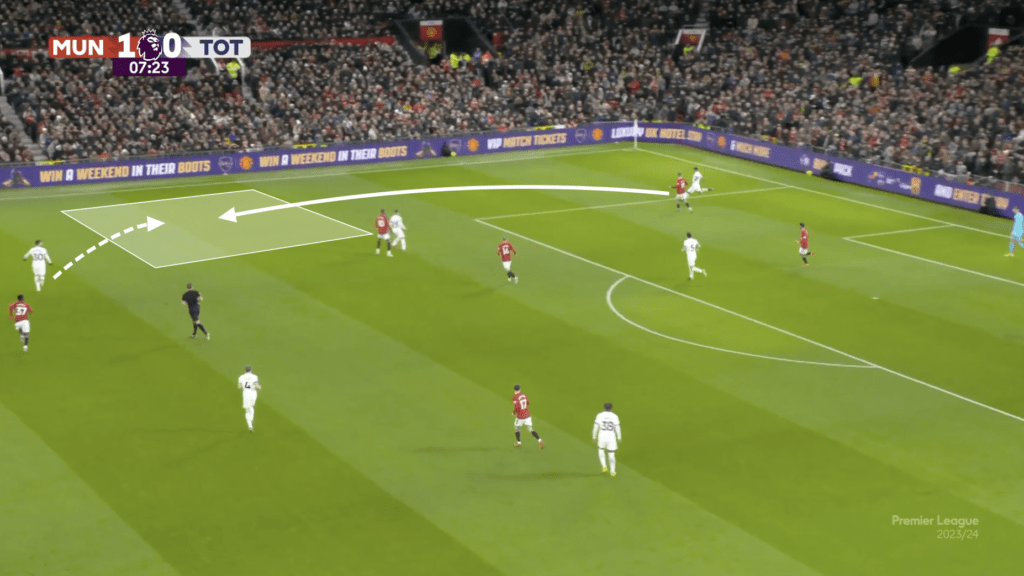
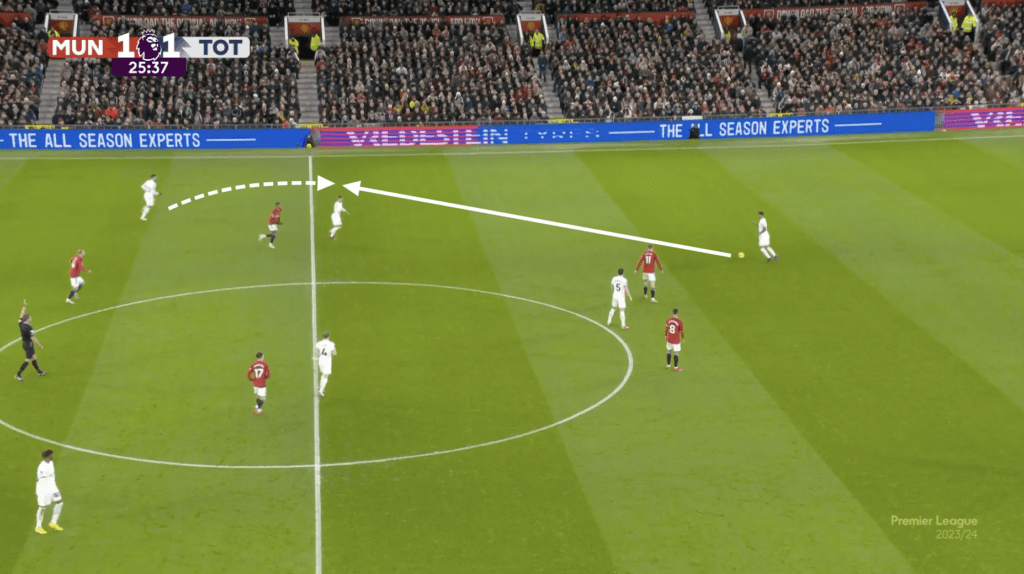
In the high build-up, Tottenham used a 1-2-5-3 formation, still pushing the fullbacks into the midfield. This meant they had five players in the midfield, creating a numerical advantage against United’s midfield four. This helped them control the game because they could always find a free man.
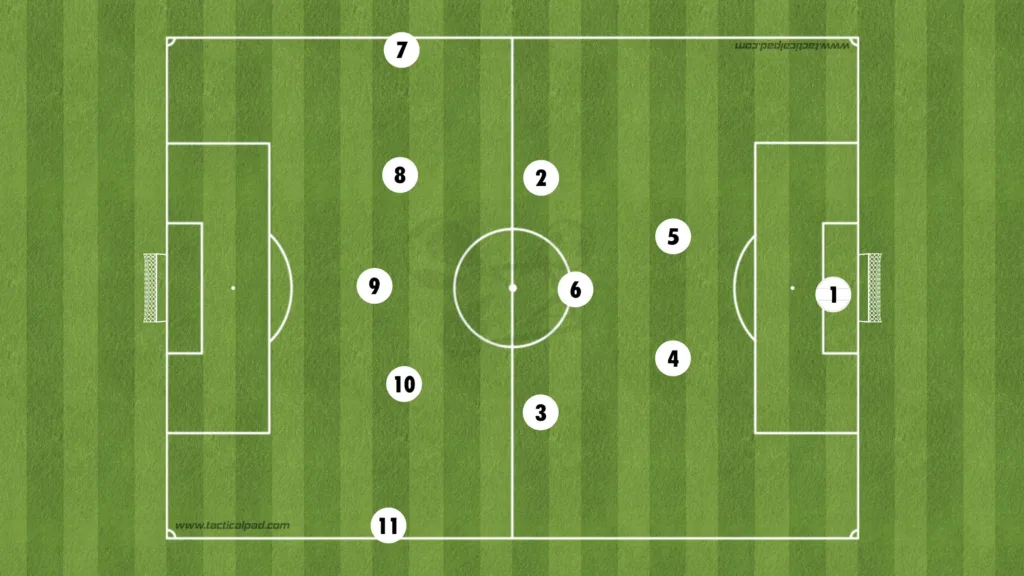
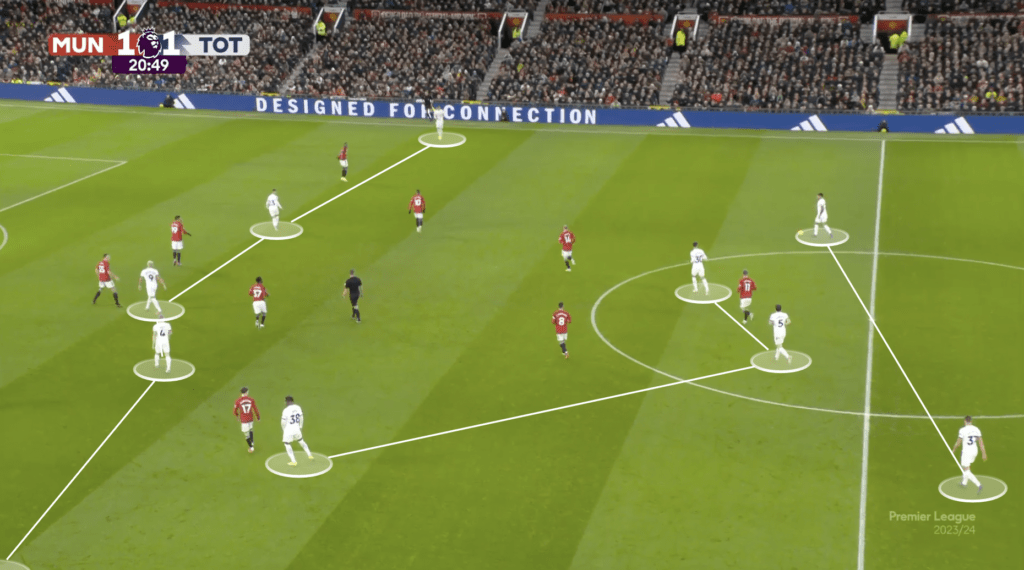
An apparent principle of Ange Postecoglou’s Tottenham is to be fluid, constantly changing positions and confusing the opposition. They will mainly do this with the midfielders, which helps them create space and worsens the organization of the opposition midfield.
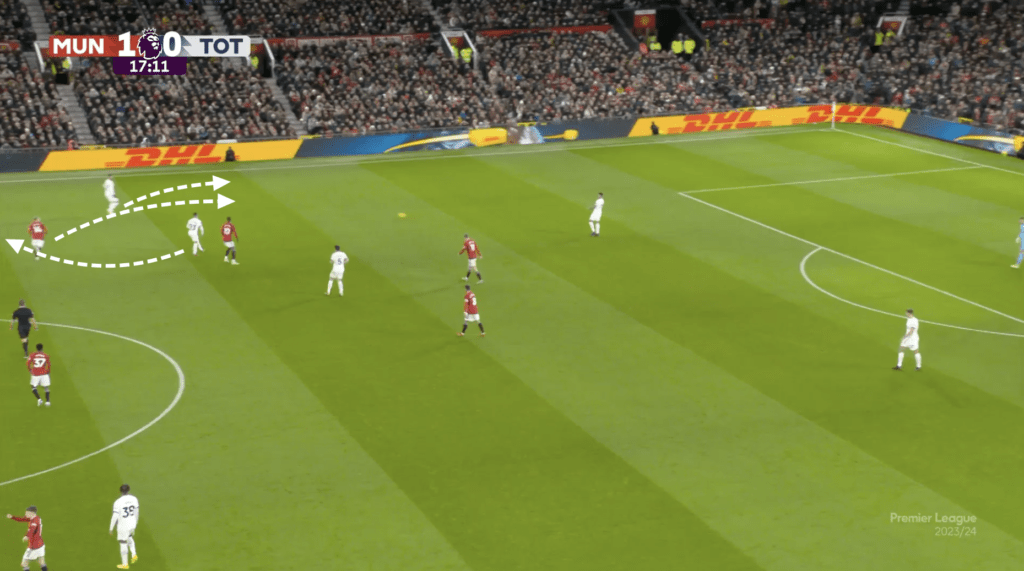
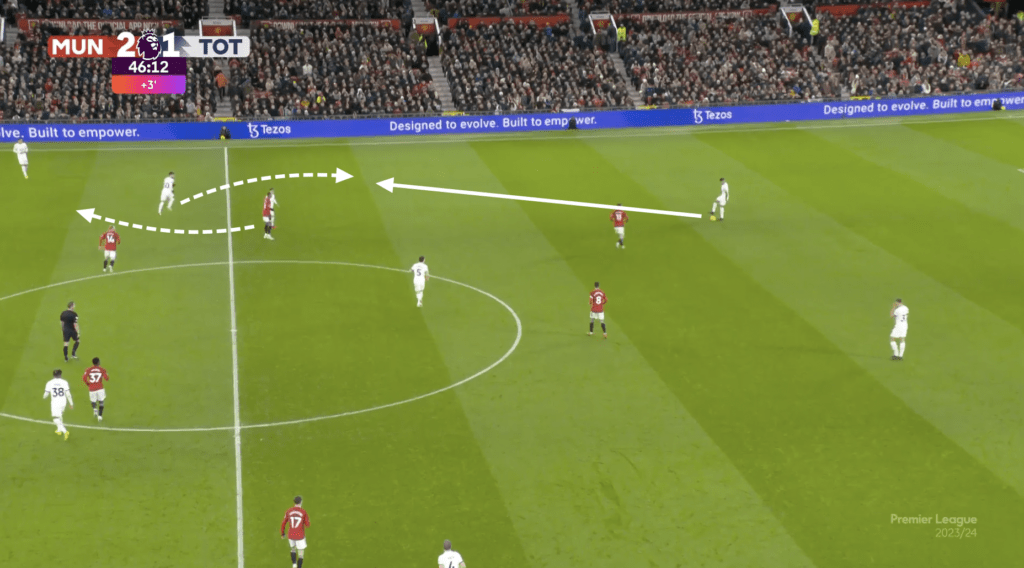
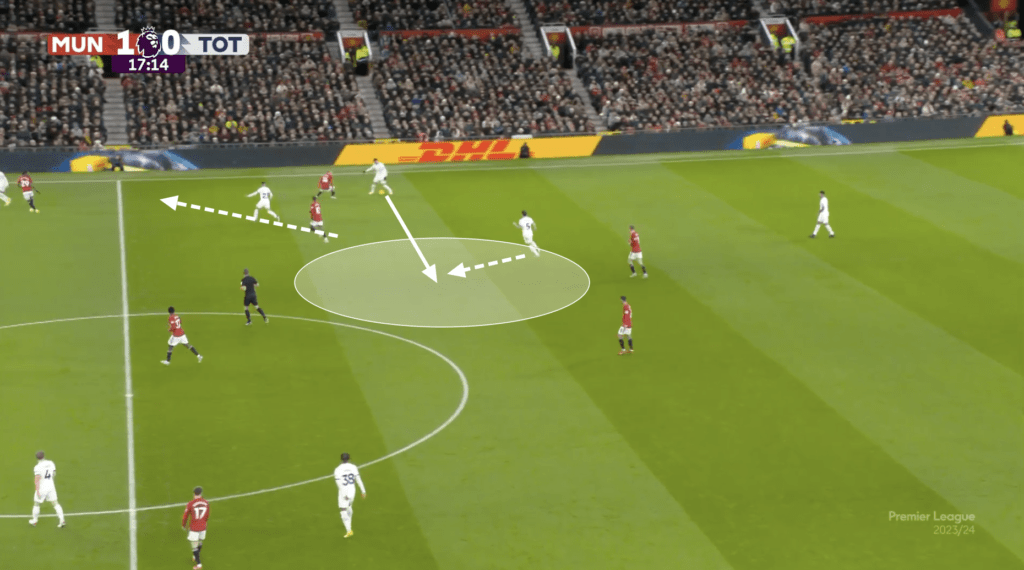
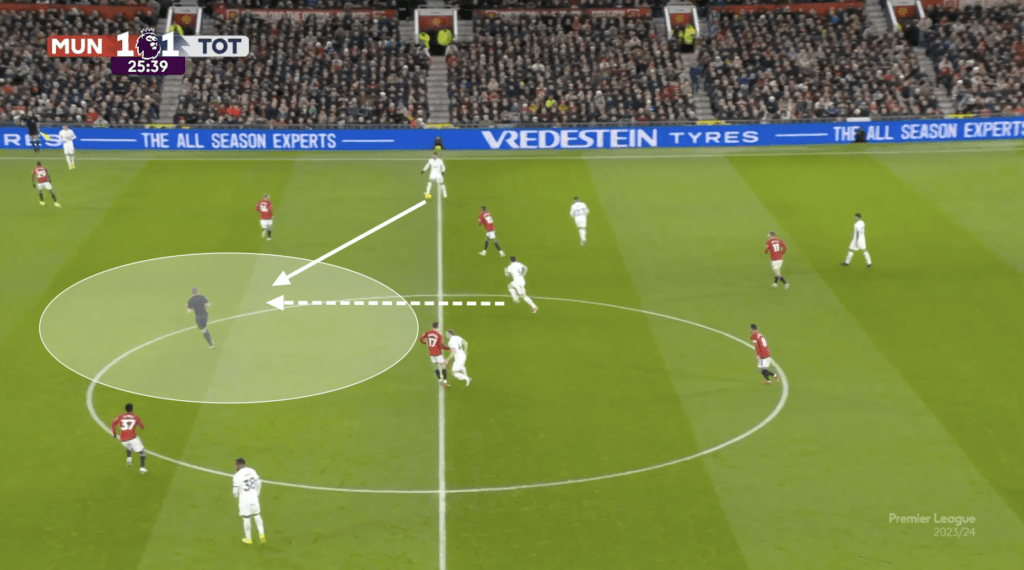
Defending
In the low press, Tottenham set up in their 1-4-1-4-1 formation, trying to stay compact while closing the center.
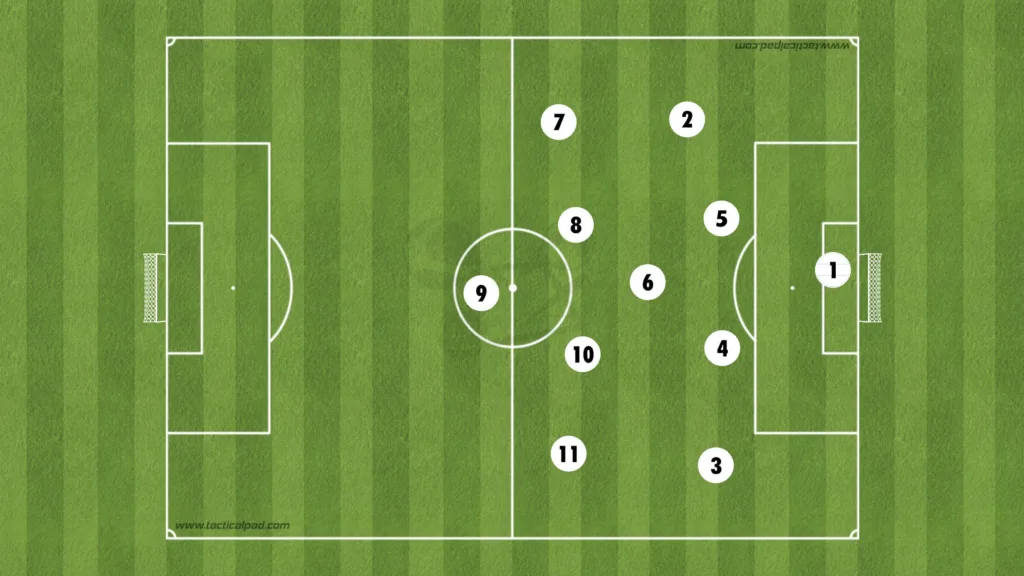
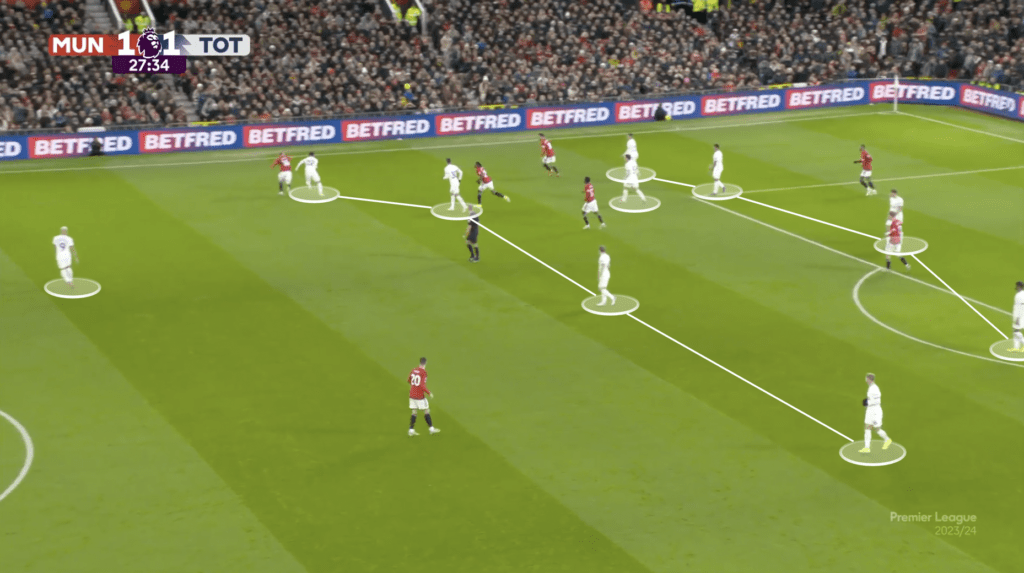
They would try to press Man United as much as possible, which caused them to frequently go long, where Tottenham could win the first or second balls.
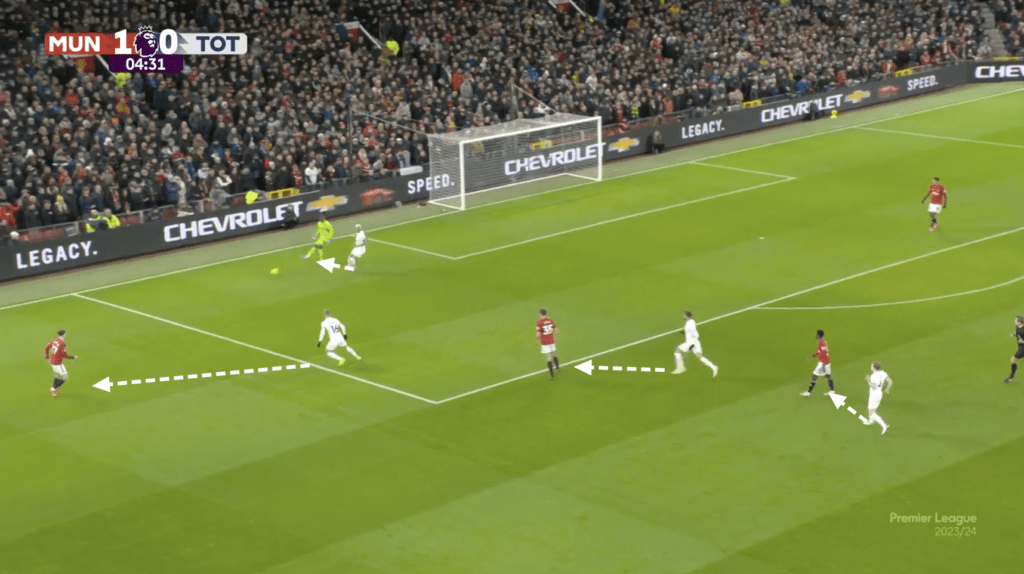
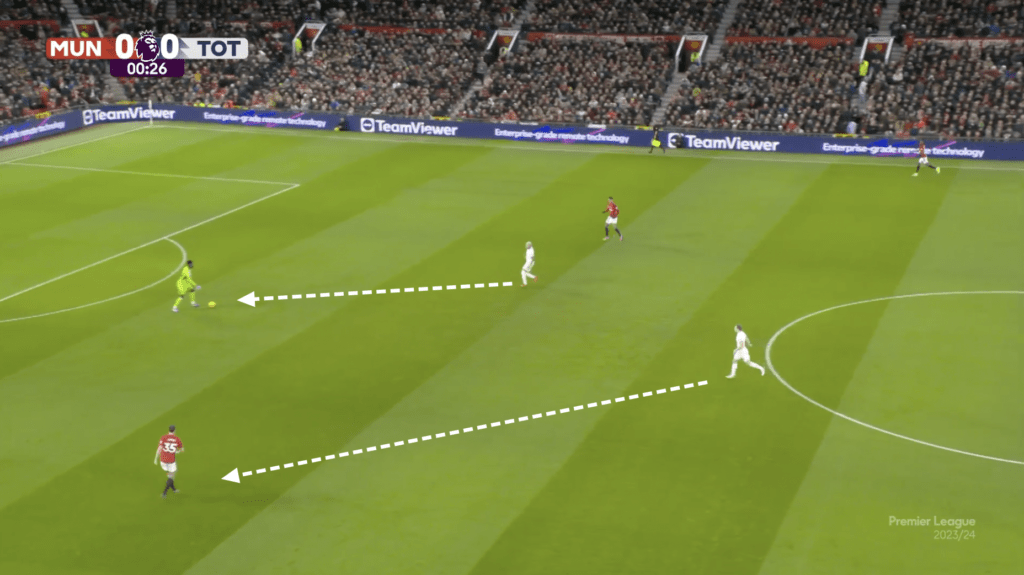
Something that we have seen a lot with Postecoglou’s Tottenham is that they, no matter what, always try to keep an extremely high backline. This is something that they did against Manchester United as well.
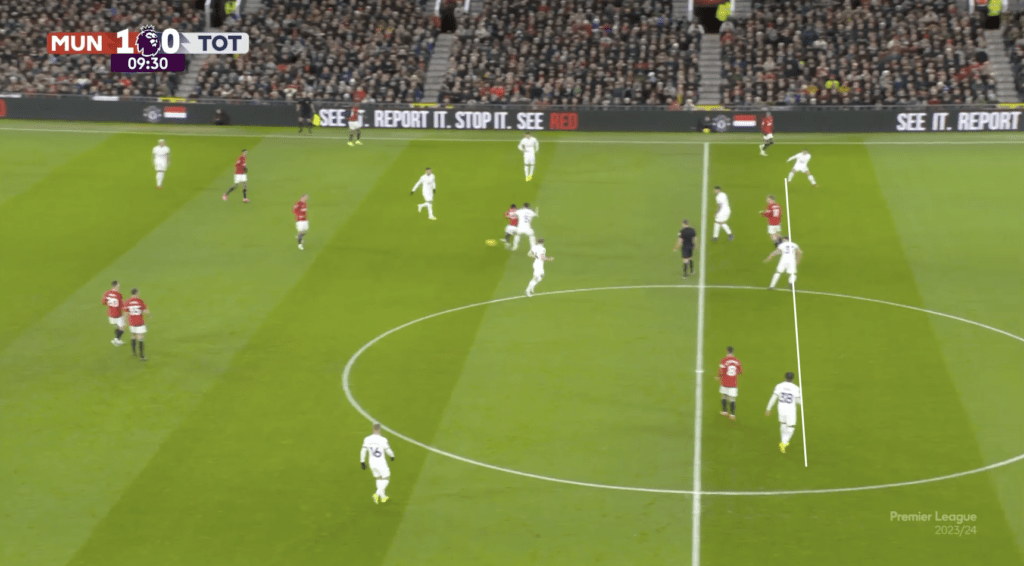
Transitions
Tottenham were, apart from a few crucial sequences, good in the defensive transitions and often regained possession quickly after losing it. Their central numerical advantage in the midfield enabled them to apply pressure immediately after losing the ball.

However, as established, Tottenham’s centrally positioned fullbacks meant there was space for Man United on the defensive transitions, sometimes causing problems for Ange Postecoglou’s team.
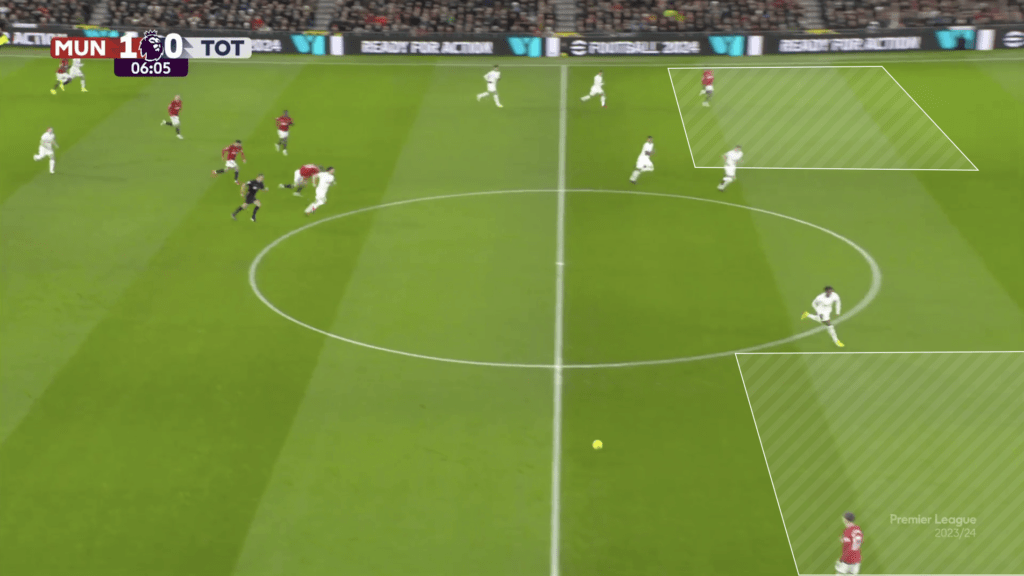
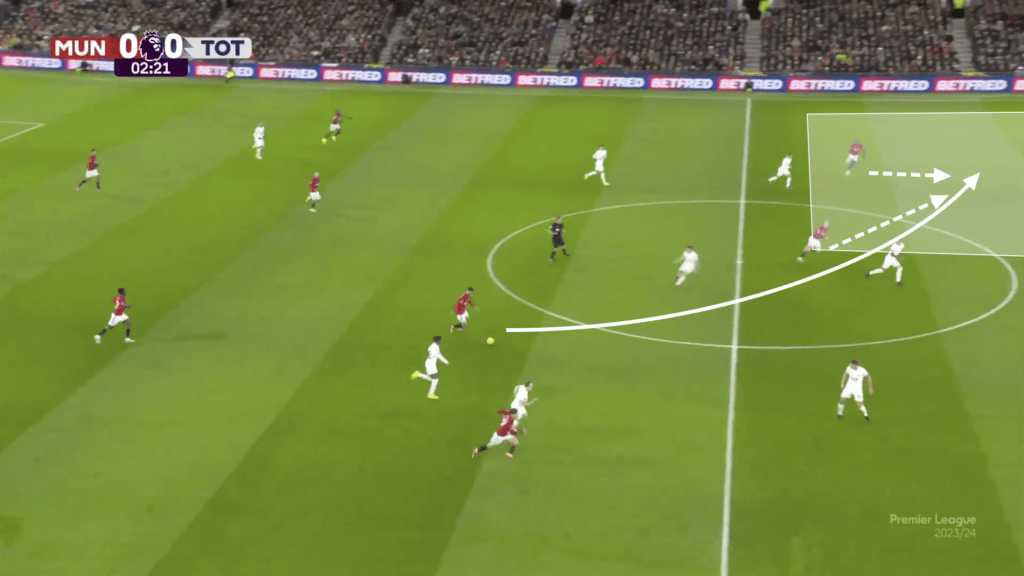
Final Thoughts
In the clash between Manchester United and Tottenham, tactical intricacies unfolded, shaping the rhythm of the game. This analysis has delved into the fundamental principles, formations, and player strategies that played a role in this compelling encounter. From Manchester United’s dynamic build-up to Tottenham’s fluid and pressing style, each team’s approach had a significant impact on the game’s flow. By shedding light on these tactical dynamics, we aim to provide a simplified understanding of the strategic decisions that influenced the outcome of the game.
